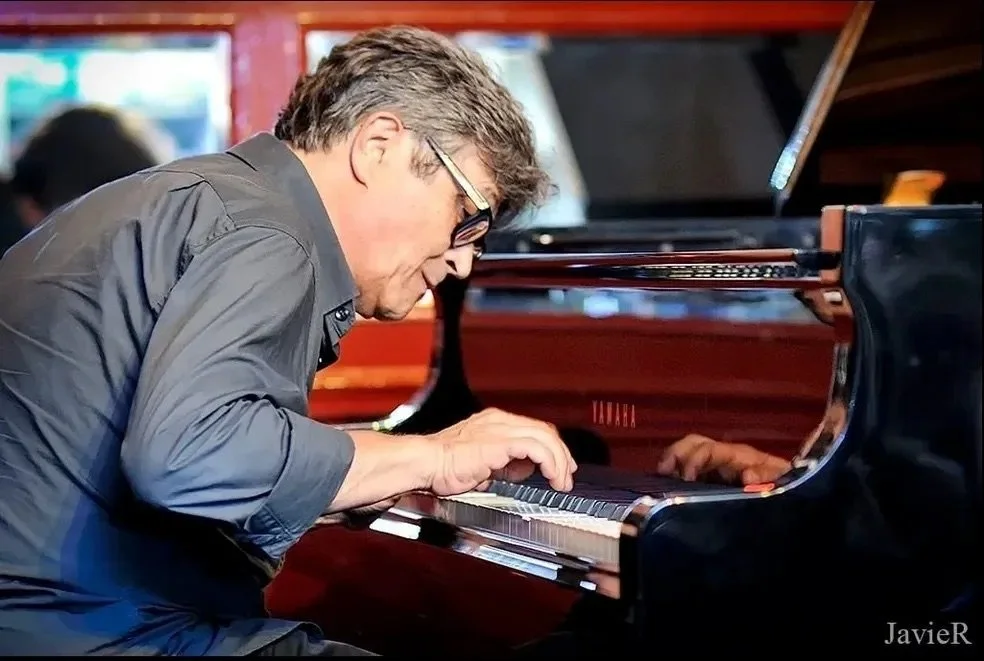Spanish Jazz: A reflection of the cultural richness and diversity of Spain
Photo: Carlos Zurita | Unsplash.
Spanish jazz has a rich and fascinating history that stretches back to the early 20th century. Jazz first arrived in Spain basically from Paris during the 1920s. “The first Jazz album was recorded by the Original Dixieland Jazzband and was officially available in Spain in the year 1920, some 30 years after the emergence of this new style/musical movement in the United States”, according to Lacarne Magazine.
The Universal Exhibition of 1929 in Barcelona helped enormously to consolidate the city as the base of Jazz in Spain, also helping the newly emerged Swing style to quickly become known in the rest of the Peninsula. However, the civil war, the Second World War and the new post-war slowed down the development of Jazz in the country.
Tete Montoliu & Bobby Hutcherson at Kuumbwa Jazz Center, Santa Cruz, CA, 5/14/1984. Photo by Brian McMillen via Wikipedia.
Even so, the “El Lirio Campestre” orchestra appeared in Barcelona in 1944, which played the standards of Benny Goodman and Woody Herman. In 1947 the Hot Club of Barcelona reappeared. The association resumed its activities by organizing some jam sessions, in which a very young Tete Montoliu made his debut on piano.
However, it wasn't until the 1950s and 60s that Spanish jazz began to develop its own unique style. Spanish jazz musicians were influenced by the rhythms and melodies of flamenco music, which gave their music a distinctive flavor. And in the 70s in Spain the germ of the specialized teaching of Jazz began to sprout. In 1979 the Taller de Músics school was created, followed by the School of Creative Music and the School of New Music in Madrid.
What makes Spanish jazz so special is its ability to blend traditional Spanish music with the improvisational elements of jazz. This fusion creates a unique sound that is both sophisticated and soulful.
What makes Spanish jazz so special is its ability to blend traditional Spanish music with the improvisational elements of jazz. This fusion creates a unique sound that is both sophisticated and soulful. Spanish jazz musicians are known for their virtuosity and passion, and their music often reflects the cultural diversity and vibrancy of Spain.
One of the most important figures in the history of Spanish jazz, as we mentioned, is Tete Montoliu. Montoliu was a pianist who was blind from an early age, but his musical talent was exceptional. He became a major force in Spanish jazz during the 1960s and 70s, and his music was deeply influenced by the rhythms and melodies of Spanish folk music.
Another important artist in the history of Spanish jazz is Paco de Lucía. De Lucía was a flamenco guitarist who began incorporating jazz elements into his music during the 1970s. He was known for his incredible technique and his ability to blend traditional flamenco music with jazz improvisation.
Contemporary Spanish jazz is also thriving, with a number of talented artists making their mark on the international jazz scene. One of the most exciting new talents is pianist Marco Mezquida, who has been described as "one of the most exciting young pianists on the Spanish scene" by JazzTimes magazine. Also worth mentioning, saxophonist Perico Sambeat, pianist Chano Domínguez, and bassist Javier Colina.
Chano Dominguez. Photo: JavieR via his website.
"Spanish jazz has come of age, with a distinctive sound and an impressive roster of musicians."
In the words of music critic and historian, Ted Gioia, "Spanish jazz has come of age, with a distinctive sound and an impressive roster of musicians." As jazz continues to evolve and change, Spanish jazz will undoubtedly continue to be an important and influential part of the genre.
You probably have already experienced this rich and soulful scene that as journalist Pablo Sanz notes “ is not just a style of music, it's a reflection of the cultural richness and diversity of Spain itself" with the many performances Oh! Jazz have offered from Café Berlín in Madrid: Chano Domínguez & Diego Amador, Jorge Pardo, Susana Ruiz (below), Gautama del Campo, Patax and Mastretta, to name a few.
If you haven’t, Jazz Appreciation Month is the perfect occasion to do so. So sit back, press play and enjoy them on Oh! Jazz. You are in for a treat!




